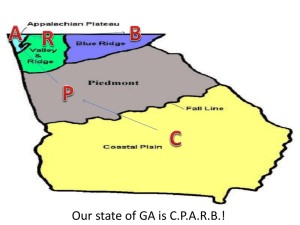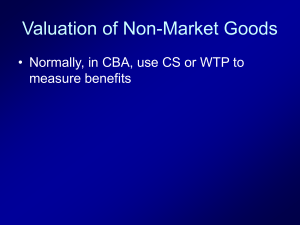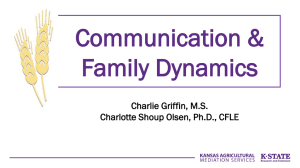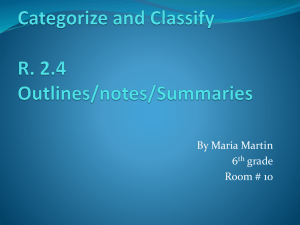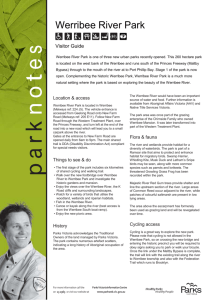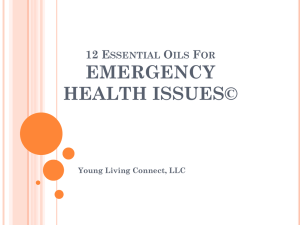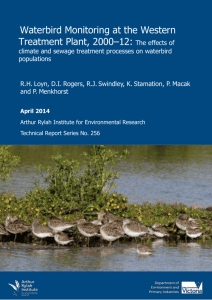Presentation
advertisement
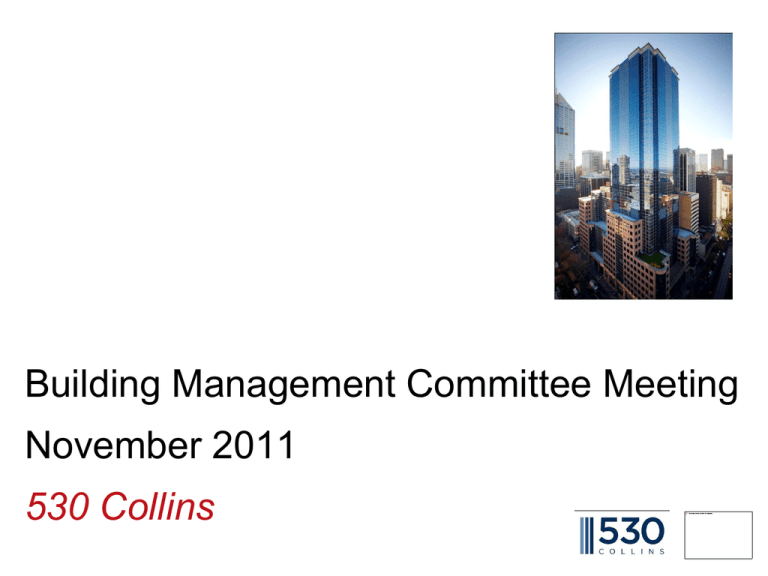
Building Management Committee Meeting November 2011 530 Collins Welcome • Phil Pulford – Operations Manager • Anna Patuto – Tenant Relationship Manager • Julie Weatherhead – Peppermint Ridge Farm • Ellen Regos – MWMG • Kim Host – National Sustainability Manager • General Introduction Environmental Performance 2011 • Energy • Water • Waste / Recycling Electricity Gas Water Waste / Recycling Streams 530 Collins St (weight) 45.00 40.00 Secondary Recovery Liquid Waste Green Waste 35.00 Polystyrene Fluorescent Tubes Tonnes 30.00 25.00 Toner Cartridges E-waste Cooking Oil 20.00 Uncompacted Paper Towel Other recycled 15.00 10.00 Cardboard Office Co-mingled Paper 5.00 Glass Co-mingled 0.00 Organic General Waste / Recycling Recycling vs Landfill 100% 90% 31% 27% 27% 27% 27% 25% 29% 27% 80% 70% 0% 0% 0% 0% 44% 0% 0% 0% 34% 39% 47% 0% 0% 0% 60% 0% 50% Secondary Recovery Recycled 40% 69% 30% 20% 10% 0% Landfilled 0% 73% 73% 73% 73% 75% 71% 73% Target 66% 56% 61% 53% Presentation by Julie Weatherhead Peppermint Ridge Farm Presentation by Ellen Regos Project Officer MWMG 2011 GPT Sustainability Tour Melbourne The Werribee Western Treatment Plant is a haven for thousands of birds and is recognised as one of the world's most significant wetlands. Werribee Western Treatment Plant - (WTP) The Western Treatment Plant (WTP) at Werribee is one of the world's largest sewage treatment plants. Covering 10,850 hectares, the plant treats more than half of Melbourne's sewage, or about 412 million litres a day. The plant is an acknowledged world leader in technical and environmental innovation, and its internationally recognised wetlands are a haven for thousands of birds. Carolyn Edwards – Education Programs Coordinator, Community Learning Melbourne Water explains how the WTP works. 1 Werribee Western Treatment Plant - (WTP) Raw sewage is transported to the Western Treatment Plant through open channels. 1 Werribee Western Treatment Plant - (WTP) Port Phillip Bay In the past the plant used three sewage treatment methods: lagoon treatment, land filtration and grass filtration. Land and grass filtration methods were stopped at the Western Treatment Plant in 2004. Today, the plant uses 3 modern lagoon treatment methods. A lagoon system is made up of 10 lagoons or ponds. Sewage flows slowly through these lagoons, allowing bacteria already in the water to break down the organic material. The water gets cleaner and cleaner as it flows through each of the lagoons. 1 Werribee Western Treatment Plant - (WTP) There are two main types of lagoons used in lagoon treatment - aerobic (with oxygen) and anaerobic (without oxygen). This is because there are different types of bacteria that could survive in either environments. Both types of bacteria are needed to work together to break down the organic material and treat the sewage for us. The first stage of lagoon treatment is anaerobic (without oxygen). An anaerobic lagoon has no oxygen because of the high amount of sewage in it. Sewage typically does not have oxygen. 1 Werribee Western Treatment Plant - (WTP) Anaerobic lagoons can produce strong, unpleasant smells and release dangerous greenhouse gases. So, some of the lagoons are partly covered with methane covers. Covering these lagoons means that the unpleasant smells and the greenhouse gases can be captured. The WTP use the captured gases, called biogas, as fuel to generate electricity to run the plant. 1 Werribee Western Treatment Plant - (WTP) As sewage flows through one lagoon after another, more oxygen becomes available in the water. In some lagoons, a lagoon is aerated (air is pumped into the water using an aerator or diffuser) to introduce oxygen into the water. In other lagoons, it happens naturally. As lagoons becomes more aerobic (with oxygen), smells becomes less of a problem. 1 Werribee Western Treatment Plant - (WTP) Maintenance is performed by divers –there weren’t too many of us eager to apply for the position. . 1 Werribee Western Treatment Plant - (WTP) By the 10th lagoon, sewage is known as treated effluent, and is ready for the next stage of the water cycle. Carolyn shows us the Class C water that has been treated to this point. 1 Werribee Western Treatment Plant - (WTP) Fake trees and nesting houses have been established to assist bird life at the WTP. 2 Werribee Western Treatment Plant - (WTP) Some 15,000 cattle and 40,000 sheep graze on land at the Western Treatment Plant. The WTP is a haven for thousands of birds and is recognised as one of the world's most significant wetlands. 2 Werribee Western Treatment Plant - (WTP) Port Phillip Bay In the late 1990s, the WTP carried out the largest upgrade of the treatment process in the plant's history. One of the main aims of this upgrade was to reduce the amount of nitrogen entering Port Phillip Bay. The lagoons were enhanced with the latest technology to remove as much nitrogen as possible. As a result, there is a reliable supply of high quality recycled water for farms, parks, market gardens and other uses. 2 Peppermint Ridge Farm This 8 hectare property has been transformed into a Living Classroom that demonstrates a sustainable approach to land management. With a focus on the value of indigenous plants in property design, Peppermint Ridge Farm provides educational experiences for schools, universities, private landholders, community groups and Local Government. 2 Peppermint Ridge Farm Julie Weatherhead and Anthony Hooper have been running the original Living Classroom at Peppermint Ridge Farm since 1996. In that time, over 5000 people have participated in their extensive educational programs. Julie is an experienced environmental educator and ecologist with a degree in Environmental Science and Education. She is passionate about protecting and enhancing our natural environment. Anthony has an extensive background in community development and the development of sustainable communities. 2 Peppermint Ridge Farm The refurbished Nar Nar Goon North PS (built in 1929) was a perfect venue for our bush tucker lunch next to a cosy log fire. Julie gives us a bit of history about the native plants and our menu. 2 Peppermint Ridge Farm Menu: Starter – Native Mint and Honey bread (in earthenware pots) Main – Chicken with Warrigal greens, garden salad & lemon myrtle dressing Dessert – Strawberry gum custard Native teas – Lemon myrtle, Anise myrtle and River mint. 2 Peppermint Ridge Farm Julie explains the goodness and nutrients found in the native plants and the various methods of protecting the gardens from pests/disease through organic and natural processes. 2 Peppermint Ridge Farm The sheep know we are coming to feed them and hurry over to the fence. The paddock has been restored to offer shade and warmth and the Alpaca (left photo) is helping to ward off the foxes. 2 Peppermint Ridge Farm Julie and Anthony share their knowledge and farming hints with us. 2 Peppermint Ridge Farm Anthony explains that Aboriginal scatterings have been found near this rock on Peppermint Ridge Farm. 3 Peppermint Ridge Farm There is a small nursery on site – where Julie grows native plants for sale to the public. 3 Peppermint Ridge Farm - Cornucopia Anthony explains about Australia’s environmental history and the changing approaches to land management. The ancient Greek legend of Cornucopia is woven in to illustrate how we have regarded nature as a source of endless bounty. 3 Peppermint Ridge Farm - Cornucopia Anthony also outlines the need for us to rethink our relationship with our unique environment. 3 Peppermint Ridge Farm - Cornucopia The GPT Sustainability Tour in the living classroom! 3 Discussion & Thank You
